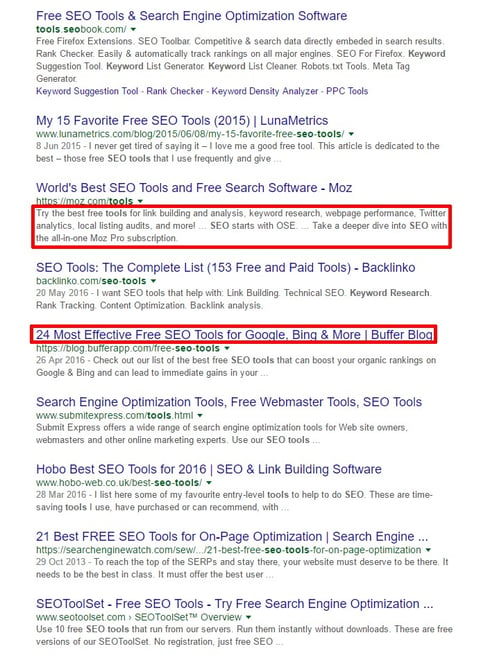During the course of May, several SEO media outlets, such as Search Engine Journal, who have noticed that Google has increased their character limits for both the Meta Title & Description; this has now been implemented and is visible on SERPs. Longer Meta Title and Description testing was first spotted by Ross Hudgens and then quickly reported by SEM Post and other important digital marketing media websites.
Up to 70 and 278 characters!
The search results you could see in May 2016 might look slightly different than in the past. Until the 4th of May, Google has been showing 50-60 characters of Meta Title and up to 160 characters of Meta Description. Now it seems these numbers have increased. Of course, not every single search result is generated based on the Meta data; most of the SEOs noticed some time ago that the Titles and Descriptions had been displayed in regards to the search query on a very regular basis. The fact is though that one of the basic SEO rules previously was: try to write a Meta Title, which is a maximum of 60 characters long, because this is how much a user will be able to see. But now, it has changed.
It seems that the new rule would read: try not to exceed 70 characters for your Meta Title and – for the moment – 160 characters for your Meta description. And, very importantly, apart from that, you must know that Google can use a 3-line search snippet for presenting your Meta Description, so sometimes you can have up to 278 characters being visible on a search results page! It is worth highlighting, that (as for now) most of the descriptions are still 160 characters long, but if Google does some testing, it means we all can bear witnesses to a permanent change to the layout of SERPs.
The Impact of the New SERP layout on your SEO/content marketing strategy
What does this change mean to the webmasters? Most of all, it means, that now you can have more digital real estate. 10 additional characters in the Meta Title seems to be enough to put two additional words, which could enhance your chances of driving traffic to your website. Also, the change could have a potential impact on existing rankings for websites (partly at least), since many people have been optimising the titles for 60 characters so far.
The Meta Description, which now can be up to 278 characters, also seems to be good news for content marketers. Three lines can gift marketers with the chance of being more descriptive, as well as offering more relevant information to the user. Undoubtedly, this change will be utilised by many in the following weeks and months to come.
To sum it up, the SERPs layout changes are not a revolution – the CTR has not increased significantly yet. Although, we believe, that the coming months are a good time to re-think and re-optimise meta data of your website. The goal is to utilize the content marketing SERPs potential in its maximum.







